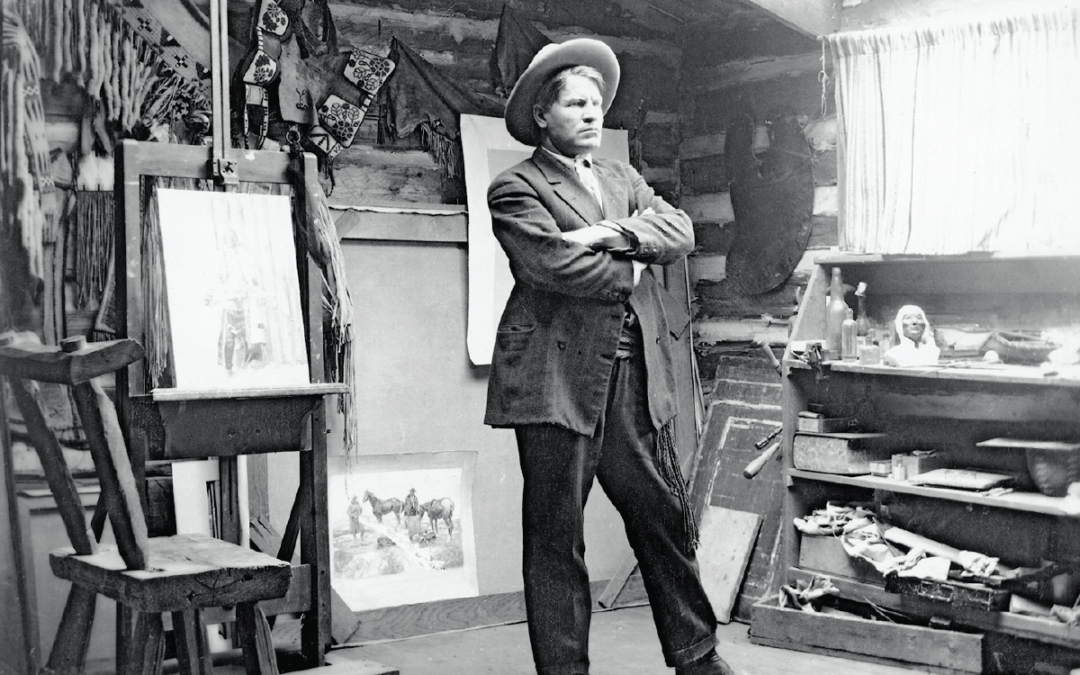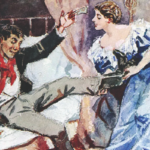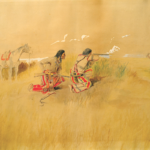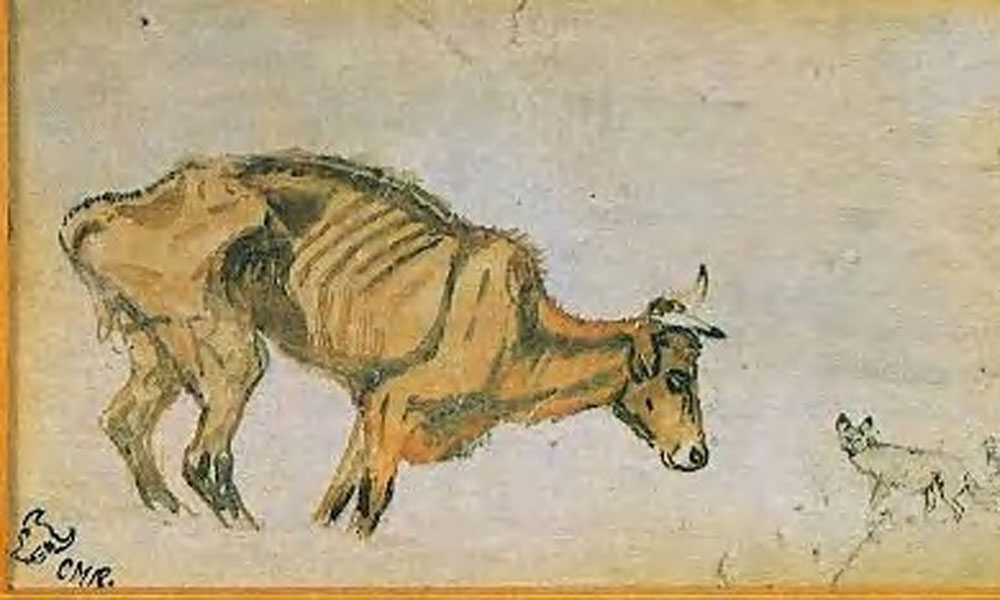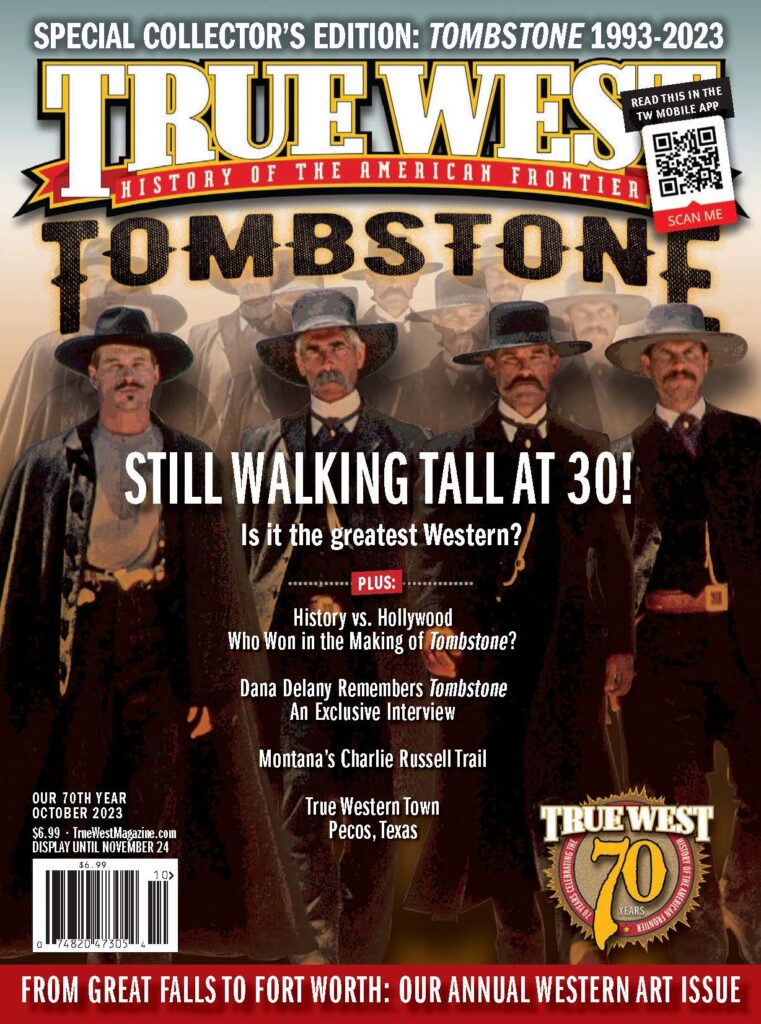Travel across Montana and discover the state through the life and art of the cowboy artist.
Charles M. Russell was 16 when he first arrived in the Judith Basin of Montana in 1880 and found work on a sheep ranch. He visited family in Missouri and Illinois in the winter of 1882 and returned in the spring to work as a cowhand on the O-H Ranch, in the Judith Basin area. The region remains sparsely populated but is rich in history and retains its natural beauty from the days Russell first arrived there.
The county of Judith Basin encompasses nearly 300,000 acres, surrounded by four mountain ranges including the Judith, Snowy, Highwoods and Little Belt Mountains, and is the location of the Lewis and Clark National Forest. To the north and west are Fort Benton, the Missouri River and Great Falls.
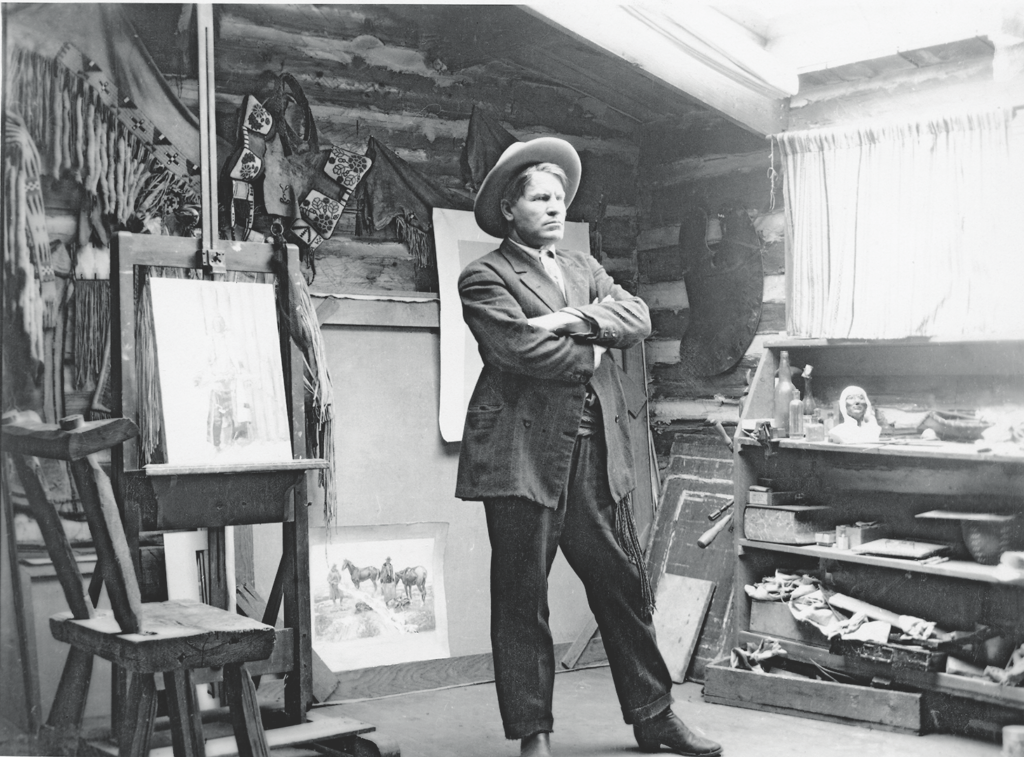
Russell lived with Jake Hoover in a cabin in the Little Belt Mountains above the town of Utica, when he engaged in some of his early cowboy work in the state of Montana. The Utica Museum includes artifacts and photos from the homestead era, and the period when Russell was a local resident.
The winter of 1886-87 was particularly brutal—a season later known as the Big Die-Up when tens of thousands of head of cattle succumbed to harsh winter weather in Montana, across the Dakotas and Wyoming. When the owner of the O-H Ranch asked his foreman for a report on how the cattle herd was doing, the response was a small watercolor drawing Charlie Russell did that featured a gaunt steer and which he titled Waiting for a Chinook. This drawing is one of the most recognized of all C.M. Russell art pieces and gave the artist his first exposure to an audience beyond his own family and the cowboys he rode with. The drawing, eventually displayed in a store window in Helena, garnered Russell several commissions for new art. Even so, he continued his cowboy work for more than a decade and later spent time with members of the Blackfeet Nation. This acquaintance with Indians and cowboys would serve him well as an artist.
Russell’s career might have been much different had he not met and married Nancy Cooper in Cascade. The house where they lived, called the “Honeymoon Cottage” has been restored by a local resident and now can be visited with some advance planning. Before their marriage, the structure was just 12 feet by 24 feet, but Russell added a kitchen, which made it ten feet longer and no doubt pleased his young wife.
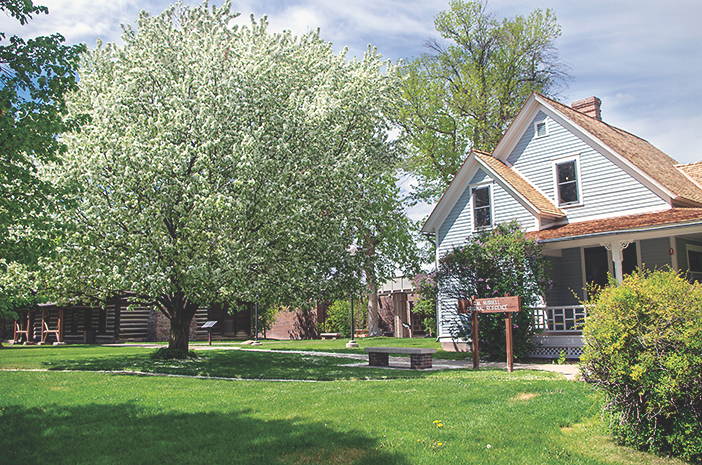
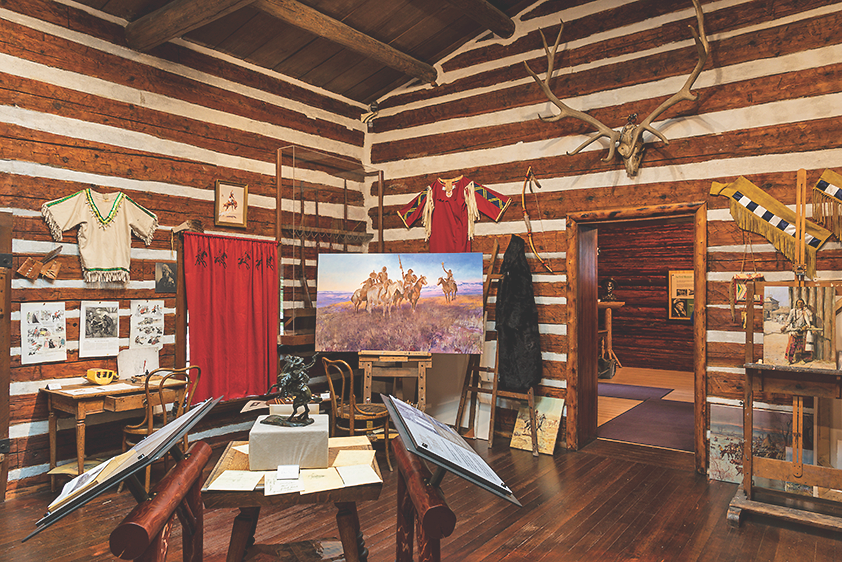
The Russells later settled near Great Falls, and he began making his living full-time as an artist. Much of his success was due to his natural-born talent, but his recognition was definitely enhanced by Nancy’s marketing abilities. She promoted his work in Montana and to the world, eventually engaging him in shows from London and New York to California.
To follow the life of Charlie Russell, start at the C.M. Russell Museum in Great Falls, which has over 2,000 items in the collection, including artifacts and original art, and his home and art studio. Walking into the studio, it’s possible to imagine him at his easel telling stories of the old days as he creates the visual experience that he lived. In March the museum opened a new exhibition on loan from the Montana Historical Society. The exhibit demonstrates the friendship between Russell and Malcolm Mackay, who saw his first Russell painting in 1911 in New York. Among the pieces Mackay acquired, and that are now on display at the museum, are Charles M. Russell and His Friends (1922) and The Roundup (1913). Other Russell originals are displayed at the Montana State Capitol in Helena.
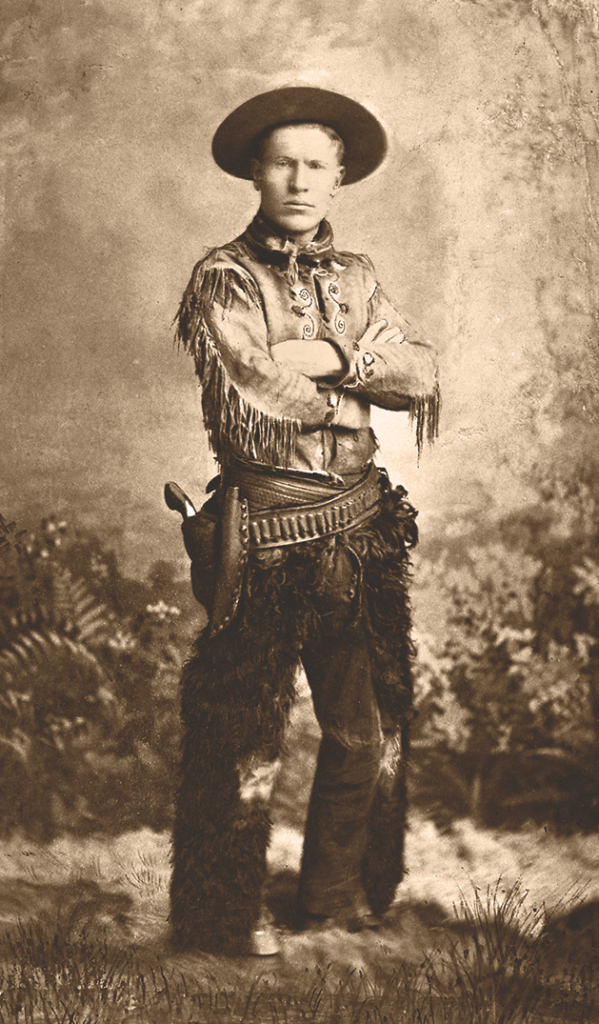
The country Russell lived in and painted includes a large part of north-central Montana, from Helena to Great Falls and Lewiston then north to the Canadian border. Some of Russell’s collectors believed he was painting a landscape and a lifestyle that was ending. But a visit to the area makes it clear where Charlie got his inspiration and that the culture is still evident.
First Peoples Buffalo Jump State Park, a National Historic Landmark near Ulm, about 11 miles southwest of Great Falls, is an archaeological site believed to be the largest bison cliff-jump in North America. American Indians harvested bison at this site for at least a couple of centuries before explorers Meriwether Lewis and William Clark traveled through the region in 1805. The mile-long sandstone cliff has buffalo hunting drive lines that lead to the sheer cliff face. Below are compacted remains of the animals driven over the cliff. An interpretive center explains how the site was used.
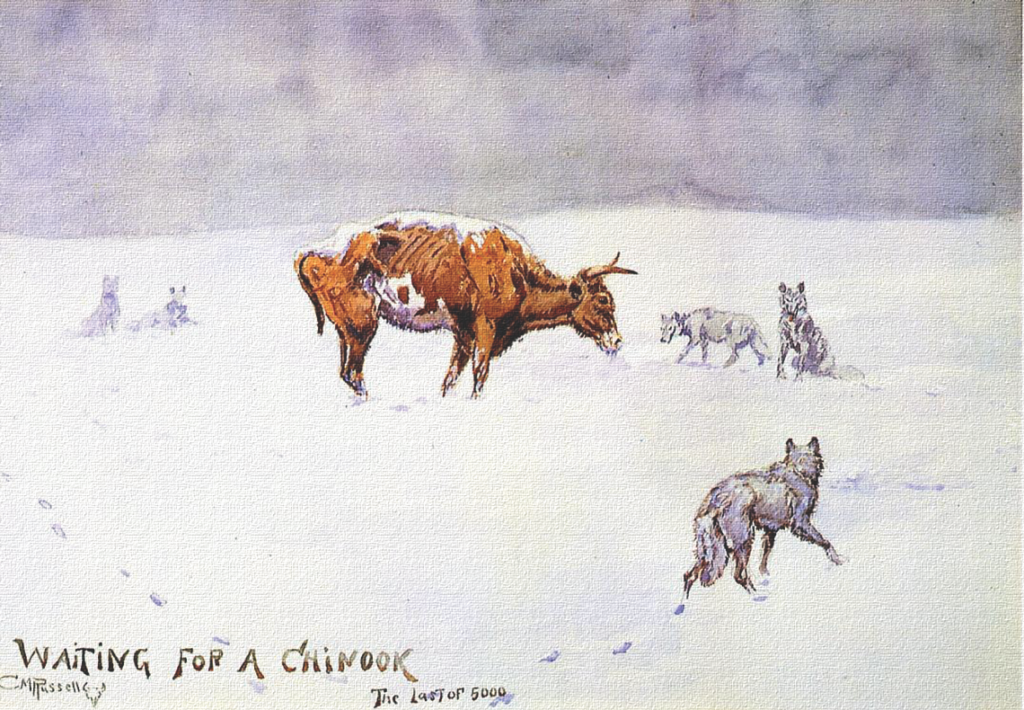
To the northeast of Great Falls, visit Fort Benton, one of Montana’s early state capitals and an important trade community on the Missouri River. The Missouri Breaks Interpretive Center focuses on the natural and cultural history of the Upper Missouri River Breaks National Monument and Upper Missouri River. Historic Fort Benton has collections depicting the fur trade era, including the trade with nations of the Blackfoot Confederacy, and with men who took their large, red river carts along the Whoop-up Trail to Canada. The fort’s reconstructed bourgeois house includes the fort manager’s quarters and the clerk’s office. The Starr Gallery of Western Art, located in the ceremonial room, has rare Bob Scriver bronzes and Karl Bodmer lithographs.
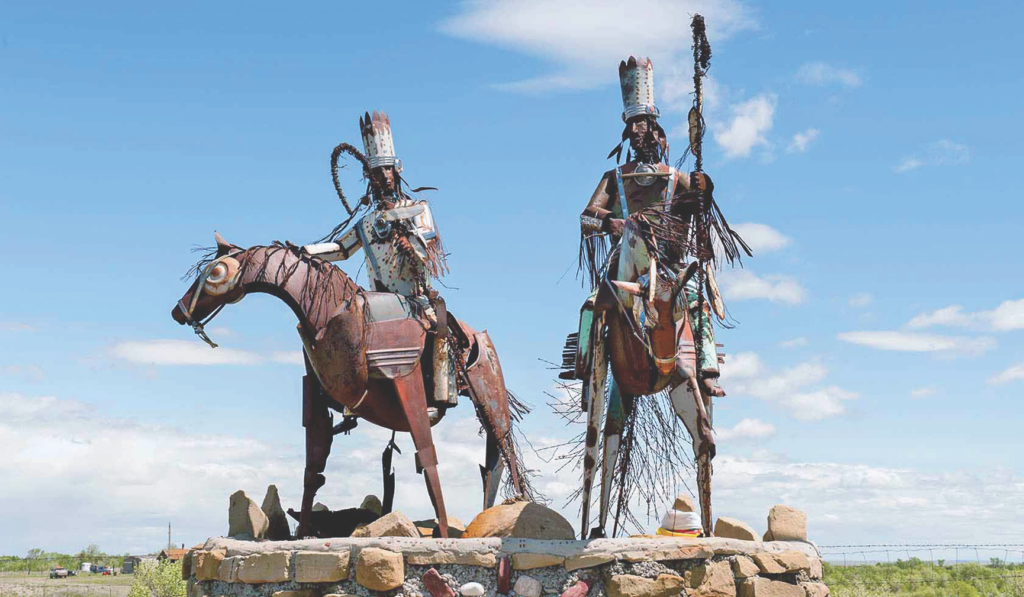
The Museum of the Northern Great Plains, also in Fort Benton, has on display the Hornaday Smithsonian Bison and an impressive collection of Western art by 19th-century artists including John Mix Stanley and Granville Stuart.
Because Russell spent time living with Indians of the region, travel west to visit the Blackfeet Heritage Center & Art Gallery in Browning, which has a diverse collection of artwork including paintings, jewelry and drums by Blackfeet and other tribal artisans. One piece of art Russell created after his time with the Blackfeet was When The Land Belonged to God, painted in 1914.
Montana is justly proud of Charlie Russell, and there are displays of his art at various locations in Helena, including the state capitol.
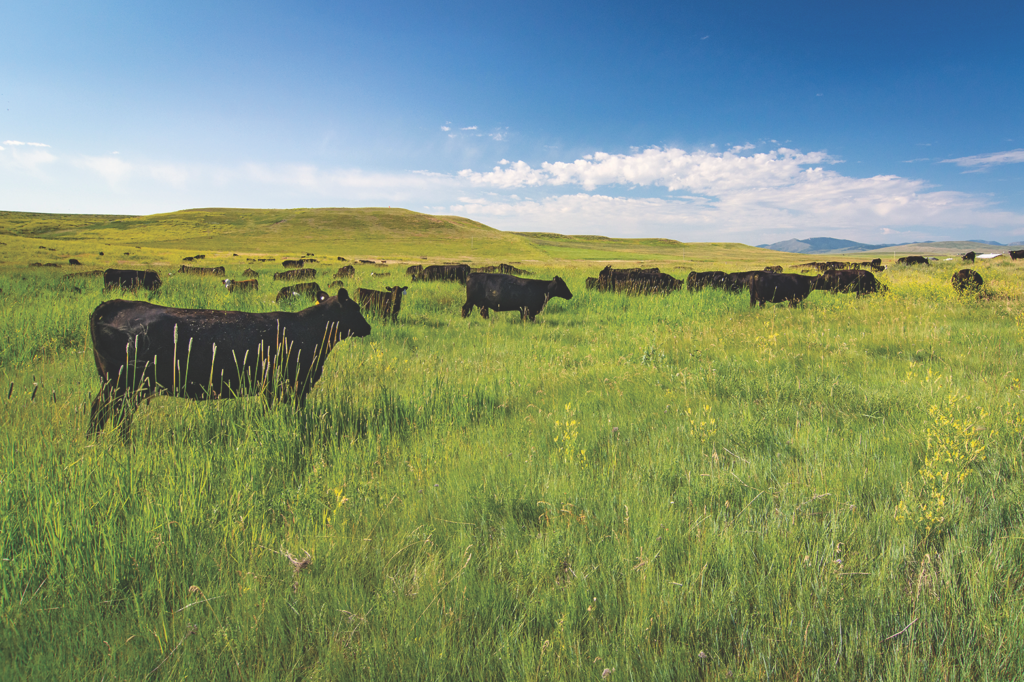
A Wide Spot in the Road
The Cowboy Artist
C.M. Russell made oil and watercolor paintings, and did drawings on stationery, napkins and random pieces of paper. In addition, he developed sculptures in wax, clay, plaster and other materials, some of which were ultimately cast in bronze. The Whitney Gallery of Western Art in Cody holds more than 350 pieces of art by Russell, including paintings, drawings and sculptures. The mural Russell painted in 1912, Lewis and Clark Meeting Indians at Ross’ Hole, hangs in the House chambers of the Montana capitol building in Helena. Among the locations where original Russell art is on display are the Amon Carter Museum of Western Art in Fort Worth; the Sid Richardson Museum in Fort Worth, which has a new exhibit in 2023: “Charles M. Russell: Storyteller Across Media”; the Brinton Museum in Big Horn, Wyoming; and the Eiteljorg Museum in Indianapolis. With over 4,000 art pieces, you can imagine there are many other museums across the country with Russell originals on display.
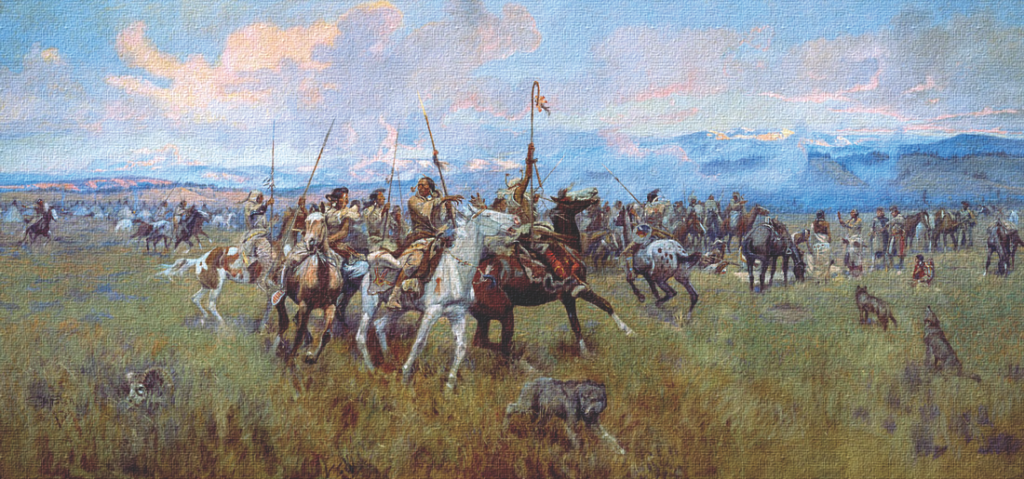
Good Eats & Sleeps
Good Grub: Oxen Yoke Inn, Utica, MT; Missouri River Bar and Grill, Cascade, MT; Jakers Bar and Grill, Great Falls, MT; Celtic Cowboy Pub & Restaurant, Great Falls, MT; Roadhouse Diner, Great Falls, MT; Cowboys Bar and Museum, Great Falls, MT; Union Grille, Fort Benton, MT; Gold Bar and Western Bar, Helena, MT; Steve’s Café, Helena, MT
Good Lodging: Circle Bar Guest Ranch, Utica, MT; Cottonwood Log Cabins, Utica, MT; The Lodge at Eagle Rock, Cascade, MT; Historic Arvon Hotel, Great Falls, MT; Grand Union Hotel, Fort Benton, MT; Best Western Premier, Helena, MT; Great Northern Hotel, Helena, MT; Aspenwood Resort, Browning, MT

